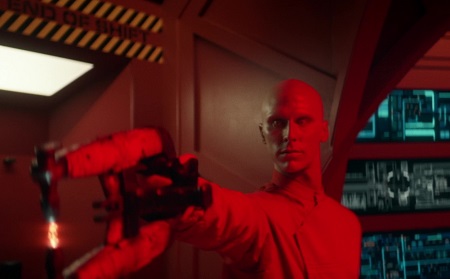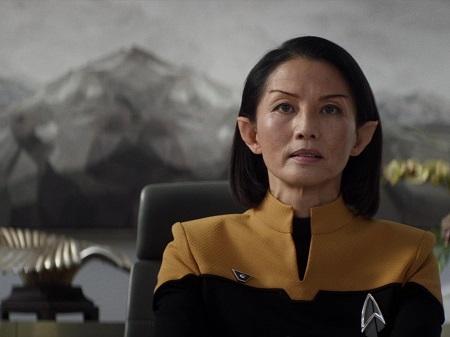
Spoiler Warning: There are spoilers ahead for Star Trek: Lower Decks Seasons 1-2 and the following Star Trek productions: The Original Series Season 2, The Next Generation, and Deep Space Nine Season 3.
With Lower Decks’ third season fast approaching, I wanted to write up a theory that I’ve had kicking around since the second episode of Season 2. Lower Decks’ episodic nature hasn’t lent itself to a ton of theory-crafting so far – although I do have at least one more in the pipeline, so stay tuned for that! – but this one feels plausible; it’s the kind of narrative choice that I could see the show’s writers making.
First of all, let’s briefly recap what happened to Ensign Boimler from the end of Season 1 to the beginning of Season 2. After impressing Captain Riker, Boimler took a transfer to the USS Titan at the very end of Season 1, leaving Mariner and the Cerritos behind and being promoted to the rank of lieutenant. Boimler would serve under Captain Riker for a short while, and one of the Titan’s assignments at this time involved following up with the newly-aggressive Pakleds.

Lieutenant Boimler was assigned to an away mission to the planet Karzill IV as part of this assignment, and after getting caught in a firefight he was able to save the day and allow the rest of the team to make it back to the Titan. However, as this mission drew to a close a transporter accident created a duplicate – or clone – of Boimler, resulting in two identical Lieutenant Boimlers, indistinguishable from one another.
For seemingly arbitrary reasons, Starfleet decided that only one Boimler could remain aboard the Titan, and the other would have to take a demotion back to the rank of ensign and return to the Cerritos. After one Boimler returned to the Cerritos we’ve followed his actions, and the second Boimler hasn’t been mentioned since. But could that be about to change?

Although we were told that the two Boimlers were indistinguishable from one another – totally identical – the second Boimler, the one who remained aboard the Titan, seemed much more outgoing than the Boimler we’ve gotten to know. Not only that, but he seemed more than a little devious in tricking “our” Boimler to return to the Cerritos so that he could continue on the Titan and advance his career. Could we be looking at the beginnings of an “evil twin” (or “evil clone,” I guess) storyline?
It wouldn’t be the first time that such a story has appeared in Star Trek! Going all the way back to The Original Series we had stories like The Enemy Within that split Captain Kirk into two distinct personalities, one “good” and one “evil.” And of course there’s the classic Mirror, Mirror that showed our heroes’ evil alternate universe counterparts.

The Next Generation followed this up by creating Data’s own “evil twin” – Lore. Lore would tangle with the crew of the Enterprise-D on more than one occasion, doing things like allying with the Crystalline Entity and raising an army of abandoned ex-Borg, as well as trying to corrupt Data and sway him to his cause.
Most significantly we have Thomas Riker, the first transporter duplicate in Star Trek and whose character clearly inspired the Boimler storyline in Kayshon, His Eyes Open. Not only was Thomas difficult to work with for William Riker after being rediscovered, but he would go on to rebel against Starfleet, join the Maquis, and even steal the USS Defiant from Deep Space Nine.

Lower Decks has brought back a lot of Star Trek tropes and story beats, and many of them have been used for one-off gags or as cute callbacks to past events. It can be difficult to tell whether there’s some deeper meaning to the whole transporter duplicate story because of that. In the episode Kayshon, His Eyes Open it worked well as a surprising twist, a way to kick Boimler back to the Cerritos, and as a cute wink to fans of The Next Generation, especially considering Riker himself was present. The storyline could end there with Boimler’s twin never being mentioned again.
But at the same time, Lower Decks has used some of these classic Star Trek moments and story beats to set up longer arcs, or returned to them later. There’s a symmetry to some of the show’s episodes and storylines, too. The way the Cerritos saved the USS Archimedes in the Season 2 finale after having to be saved in the Season 1 finale is one of the best examples of this – and we could also point to the Pakled storyline itself as an unfolding multi-episode arc.
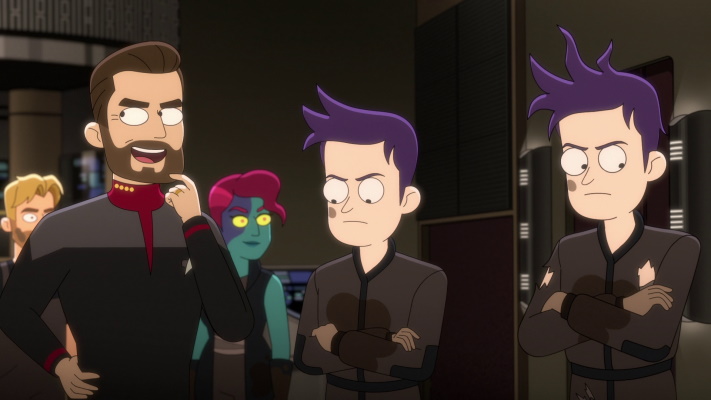
I think we’ve laid out how it’s at least possible that there could be something more going on with the transporter clone and looked at previous examples of “evil twin” tropes in Star Trek. So that answers the question of “could it happen?” quite nicely – but that’s really just the beginning.
The matter at the heart of this theory is what direction such a story would take, how it could potentially impact (our) Boimler, and what it could do for the series as a whole.
If we look back to episodes like Datalore or Second Chances, I think it’s not unfair to say that those storylines didn’t go on to have a lasting effect. The creation of twins, clones, and duplicates hasn’t actually come to matter in a significant, ongoing way for any Star Trek character so far. Even when those twins made repeat appearances their stories tended to be confined to a single episode – or perhaps a two-parter.

It was never really explained in any detail what impact Thomas’ emergence had on William Riker after the events of Second Chances. Even when Thomas returned in Deep Space Nine’s third season episode Defiant, the story unfolded from his perspective without any input from his doppelgänger.
Data’s conflict with Lore is perhaps the biggest of these storylines, with Lore being mentioned a handful of times outside of his main appearances. But because of Data’s nature, he wasn’t as emotionally impacted by Lore’s behaviour as other characters in a similar situation might’ve been. Data even expressed confusion in Second Chances as to the nature of the dispute between Will and Thomas Riker!

Although Lower Decks has been largely episodic, we’ve still seen some impressive character work across its first two seasons. The way Ensign Mariner in particular has grown into her role and come to resolve some of her issues with her mother, her friendships, and her position in Starfleet has been wonderful to see – and it’s this more serialised approach to characterisation (a hallmark of modern television storytelling) that could make an “evil Boimler” storyline different to what we’ve seen before in Star Trek.
Boimler’s issues with his transporter duplicate could have an impact on him that extends beyond a single episode – and that could take his character on a journey. Beginning with the sense of betrayal he surely felt at the duplicate’s duplicity aboard the Titan, Boimler could begin to forgive him, only to discover he’s up to no good. He could find it difficult to convince his friends at first, before showing them irrefutable proof of the clone’s misdeeds. And the whole experience of having to face off against someone who literally knows him inside and out and has shared every experience he ever had could both challenge and change him.
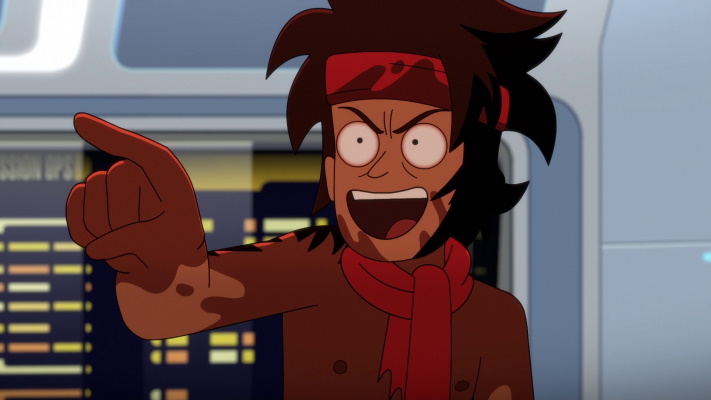
We could see a more confident Boimler emerge from under such a storyline – but someone whose friendships have been pushed and stretched before eventually settling. Or we could see Boimler begin to second-guess himself; if the “evil” clone was Boimler himself, perhaps he’d wonder if being “evil” is part of his own nature, and that could cause him to freeze or find it hard to make decisions.
In short, there are a lot of ways that such a story could go – but almost all of them would be good for Boimler’s characterisation in the long run. We’d get a fun episode with the evil twin that could harken back to the likes of The Enemy Within, Mirror, Mirror, Datalore, and others – but the impact of that episode could reverberate across an entire season, giving Boimler a character arc that could be very satisfying to see unfold.
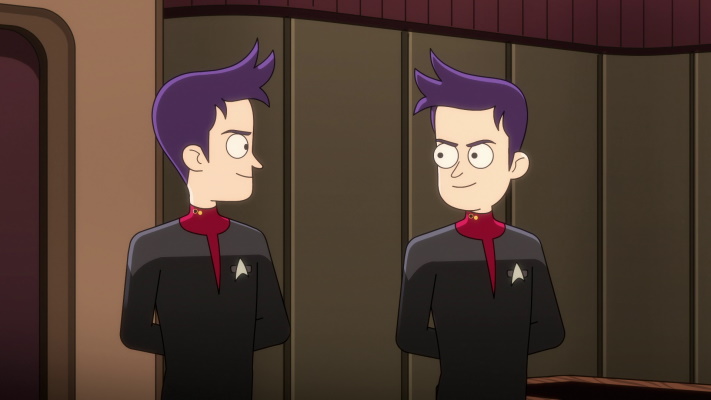
So that’s it for now! The theory is that Boimler’s transporter duplicate will – in classic Star Trek tradition – turn out to be evil!
For the reasons laid out above, I think such a story could be fun and interesting. Moreover, I like the idea of the fallout from Boimler’s conflict with his “evil twin” not being confined to a single episode and potentially setting him on a season-long arc as he processes what happened and what it means for himself and his friends. Going down that road could feel deeply cathartic – with Boimler filling in for other Star Trek characters in similar situations who never got the chance to deal with the longer-term implications of what they went through!
I hope this was a bit of fun. Please keep in mind that I have no “insider information” and I’m not trying to claim that any of this will happen in Lower Decks either imminently or in Season 4. I just think it’s a fun concept, and while all the pieces seem to be in place for such a story, it could be that the transporter duplicate will (in the best tradition of Star Trek) never be mentioned again!
Star Trek: Lower Decks Seasons 1-2 are available to stream now on Paramount+ in the United States and on Amazon Prime Video in the UK and around the world. Season 3 will premiere on the 25th/26th of August 2022. The Star Trek franchise – including Lower Decks and all other properties mentioned above – is the copyright of Paramount Global. This article contains the thoughts and opinions of one person only and is not intended to cause any offence.





